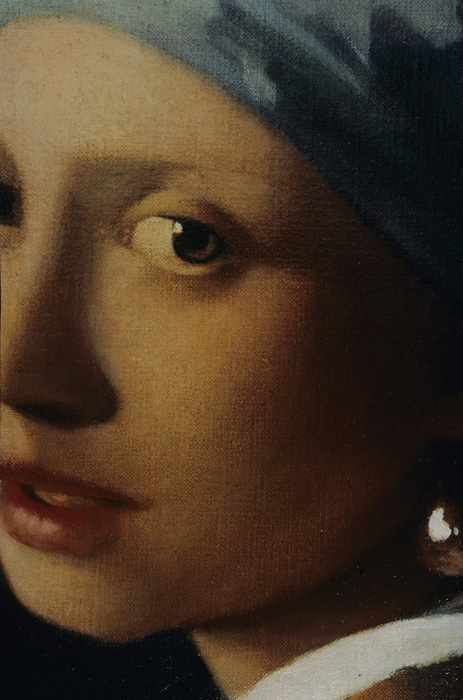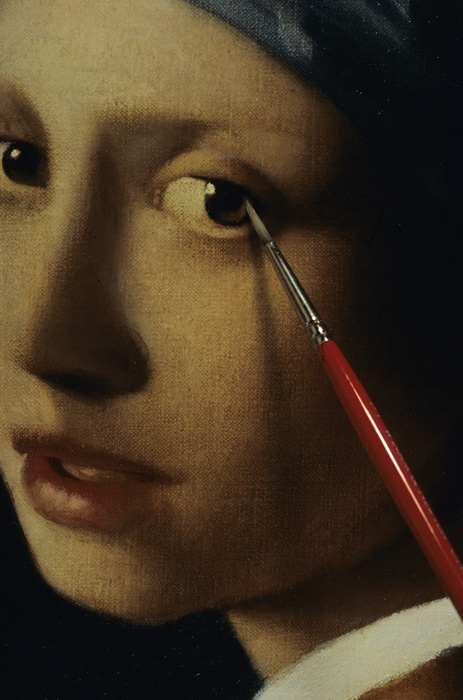
PAGE 9: Painting a Copy of Jan Vermeer's "Girl with a Pearl Earring"
Using Oil Glazing Technique and a Grisaille (Monochromatic Gray) Underpainting

This close-up again shows the relation of the glazed oil paint layers to the linen canvas texture. As mentioned earlier, the painting is being executed on a fine weave linen canvas, as was the practice in 17th century Holland. When glaze painting technique is performed on a more coarsely woven artist's canvas, the liquid tends to pool within the the spaces between the threads. While you can see the canvas texture in this image, the texture itself is smooth enough that the liquid glaze medium cannot pool between the threads. Many glazed paintings by Northern European painters such as Hans Holbein or Jan Van Eyck were painted on smooth wooden panels, which were thought to be especially well suited for this technique. However, very few paintings attributed to Vermeer were painted on wooden panels, as he seemed to prefer smooth, closely woven stretched linen canvas.




The painting is about as finished as I am capable of making it at this point. Just a tiny bit more detail work on the eye, and I will bring this project to an end.


The images taken for this website were actually photographed in 1999, just before quality digital cameras had become affordable. Hence, all of the photos of the painting process were shot using 35mm Ektachrome Tungsten slide film, which then had be digitized in 2008 by scanning the slides on a Nikon slide scanner. The image of my Vermeer copy to the left is one that I just took of the painting in 2008 using a digital camera. It shows the color in a way that is more true than what I was able to achieve using scanned images from 35mm slides.